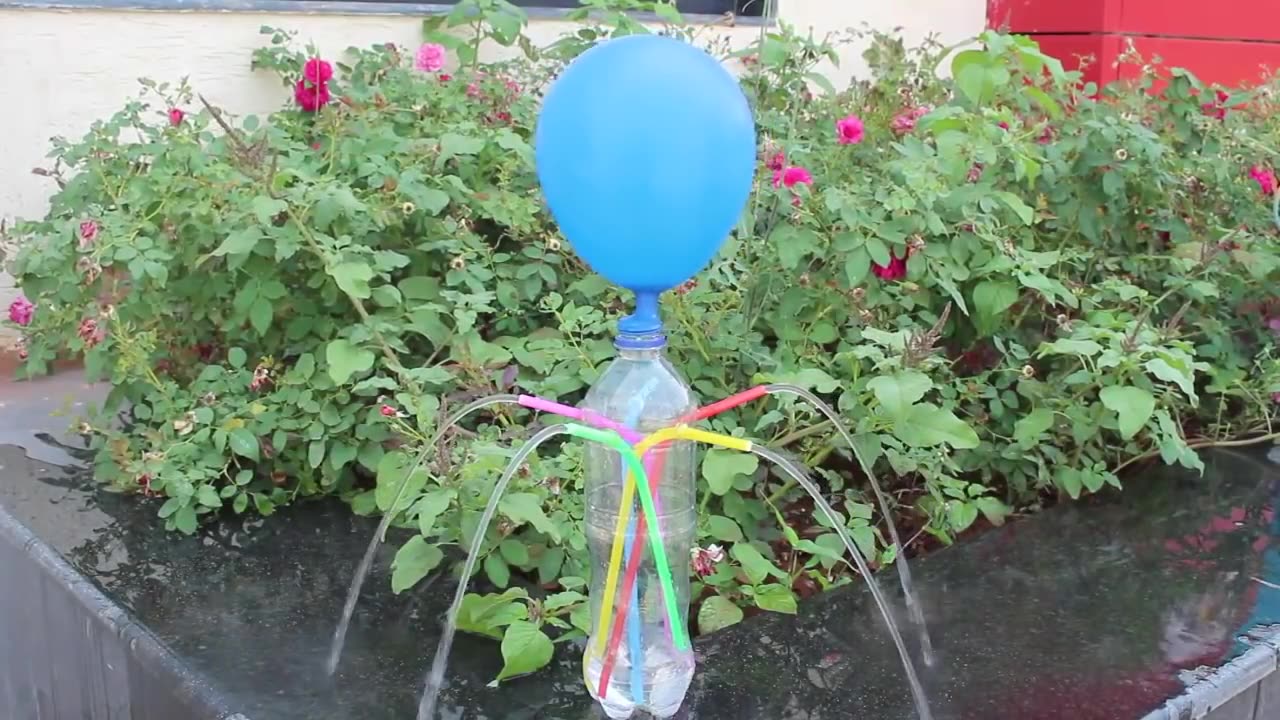Premium Only Content

Science Pressure fountain with balloon
A pressure fountain experiment with a balloon is a captivating and educational demonstration of basic physics principles, perfect for classroom settings or science fairs. In this experiment, you'll need a few simple materials: a balloon, an empty plastic bottle, water, and a pump or a source of compressed air.
Start by partially filling the plastic bottle with water, leaving some space at the top. Next, inflate the balloon and stretch its opening over the neck of the bottle, ensuring it's airtight.
Now, introduce pressure to the system. You can do this by gently squeezing the bottle, pushing the air inside, and compressing the trapped air in the balloon. As you continue to squeeze, the pressure increases, and water is forced out through the neck of the bottle into the balloon, inflating it further. This is due to Boyle's law, which states that the pressure and volume of a gas are inversely proportional when the temperature is held constant.
When you release the pressure on the bottle, the balloon deflates as the pressure decreases. This experiment beautifully illustrates the relationship between pressure and volume, providing a fun and hands-on way to learn about these fundamental scientific principles.
-
 1:03:00
1:03:00
Sean Unpaved
2 hours agoCFB Deep Dive: Matt Moscona's Expert Takes on the Gridiron
9.88K -
 27:39
27:39
Crypto.com
1 day ago2025 Live AMA with Kris Marszalek, Co-Founder & CEO of Crypto.com
84.8K6 -
 LIVE
LIVE
SternAmerican
22 hours agoElection Integrity Call – Wed, Aug 27 · 2 PM EST | Featuring Arizona
257 watching -
 1:00:05
1:00:05
Timcast
2 hours agoMASS SHOOTING At Catholic Church In Minneapolis, Children Reportedly Targeted
111K74 -
 1:34:01
1:34:01
Tucker Carlson
1 hour agoChristopher Caldwell: Is It Too Late to Save the English-Speaking World?
5.58K35 -
 2:14:40
2:14:40
Steven Crowder
5 hours agoBreaking: Minneapolis Catholic Church Shooting Live Coverage
314K307 -
 LIVE
LIVE
Major League Fishing
5 days agoLIVE! - Fishing Clash Team Series: Challenge Cup - Day 4
266 watching -
 25:03
25:03
Neil McCoy-Ward
2 hours agoFURY As JD Vance Unleashes HELL On The UK & EU… (What We Know So Far)
3.48K7 -
 LIVE
LIVE
IrishBreakdown
2 hours agoNotre Dame vs Miami Preview - Inside the Matchup
7 watching -
 LIVE
LIVE
Rebel News
1 hour agoPoilievre targets Carney on Cdn energy, Smith's AB Next, Ford's crime rant | Buffalo Roundtable
280 watching